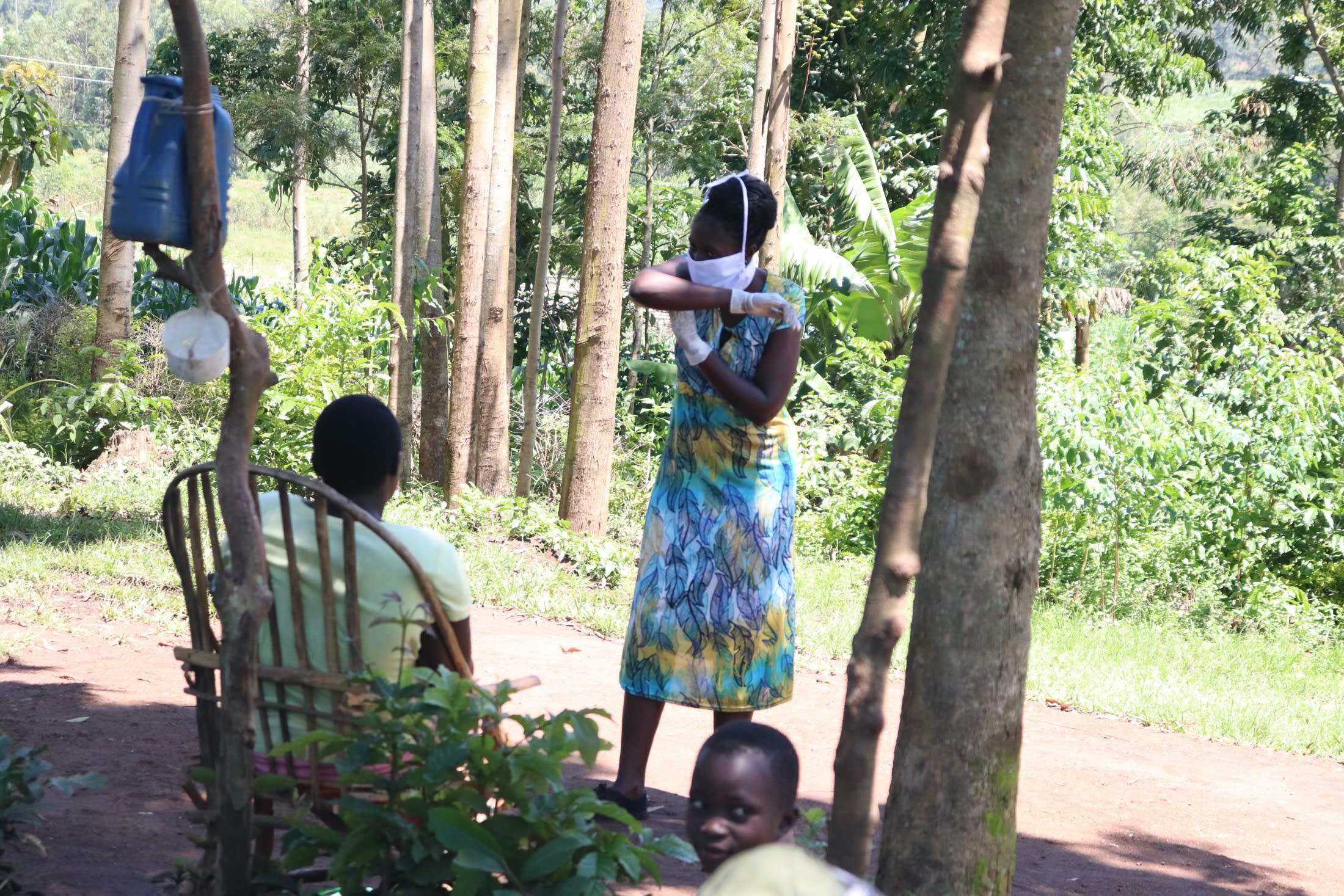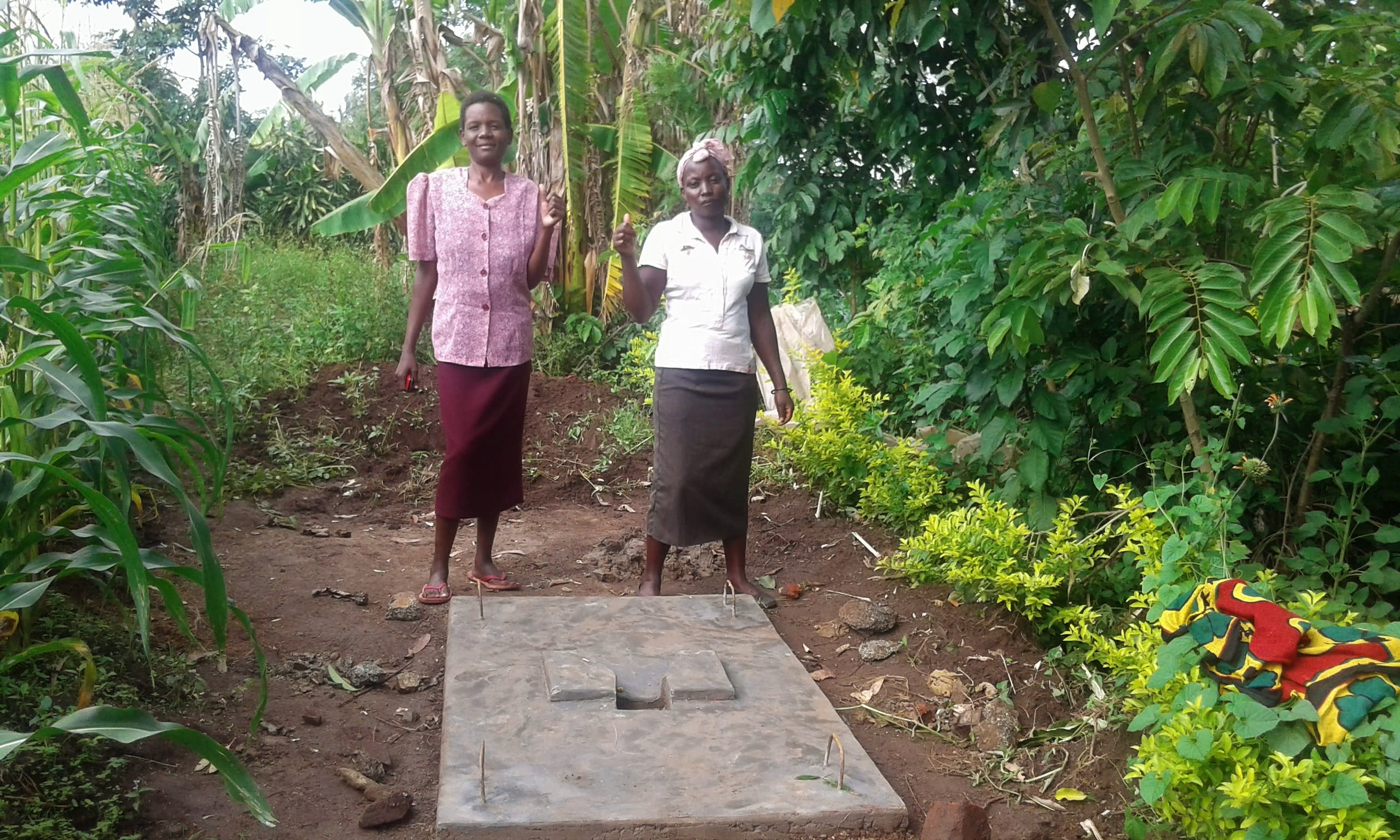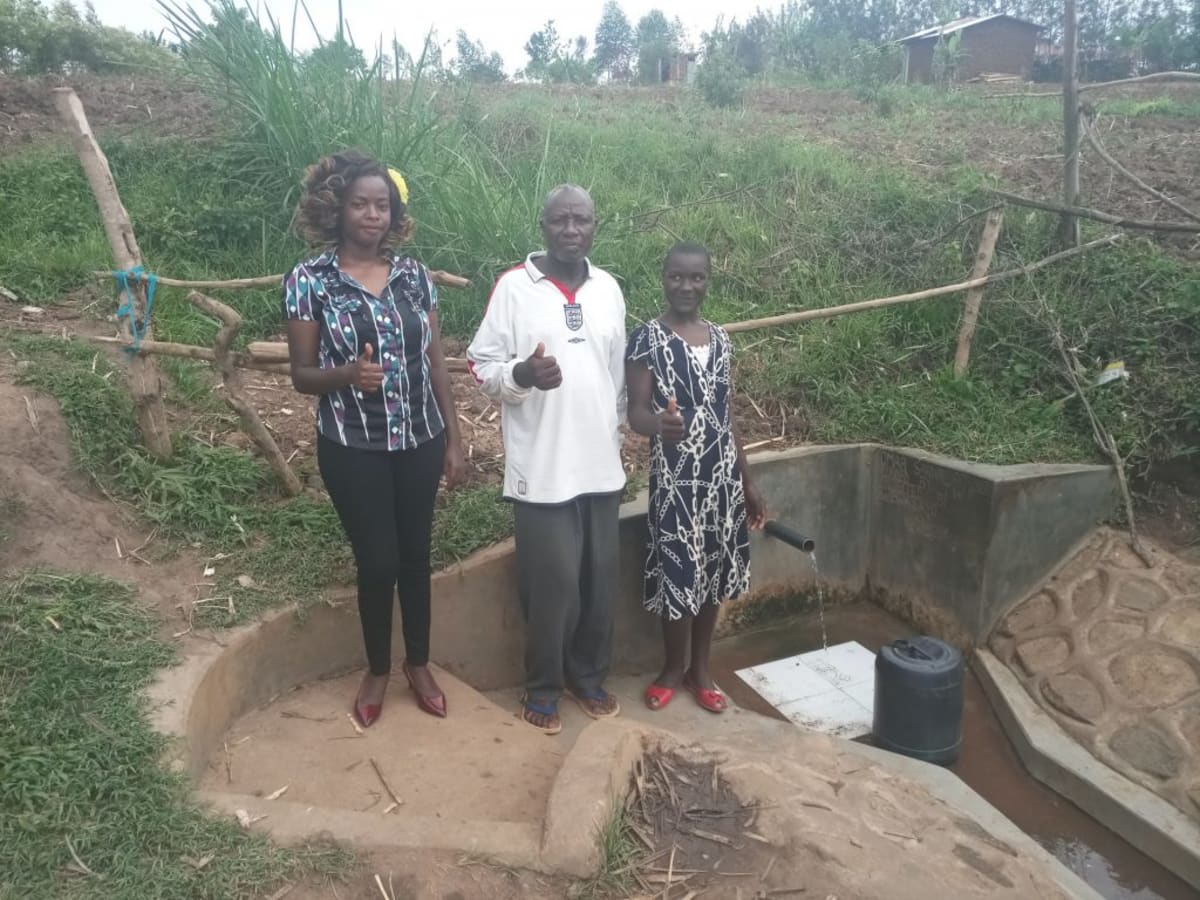This project is a part of our shared program with Western Water and Sanitation Forum (WEWASAFO). Our team is pleased to directly share the below report (edited for clarity, as needed).
Welcome to the Community
This region is inhabited by the Wanga sub-tribe of the Luhya Community. Some of these people practice small scale farming of food crops such as maize, but a good number focus on growing sugarcane to sell to a local sugar factory.
Water Situation
Omar Sakwa Spring was discovered when we were doing a project at Eshiakhulo Primary School. We interviewed students and learned that though a rainwater catchment tank would be great to have on school grounds, they were still returning home and having to use the dirty water from this spring.
The people of Eshiakhulo Village wake up early each morning, and the first thing they do is walk to fetch water. That’s difficult enough if it’s clean water they’re collecting. But, it’s not. It’s dirty water from an unprotected spring.
Locals have fixed a short pipe into the eye of the spring so that it directs water into their buckets and jerrycans.
Regular and numerous cases of diarrhea from this water result in lost income, lost school time, medicinal expenses and needless suffering.
Omar Sakwa Spring serves 16 households with 112 people who use the water for drinking, irrigation purposes, and household chores. "People in this community suffer a lot from diarrhea and typhoid due to drinking contaminated water at the spring. We will really appreciate if you help us protect it," stated Mr. Sakwa.
Sanitation Situation
Less than half of the homes here have their own pit latrine. Most of these don't have doors for privacy. Logs are suspended over the pit inside, and users have to balance on them while they relieve themselves. Because of these low numbers and poor conditions, open defecation is a big issue in Eshiakhulo Community. These latrines are especially difficult for the young and old to use, and they most commonly prefer using the privacy of bushes.
There are a no hand-washing stations, and only a few homes have helpful tools like dish racks and clotheslines. Garbage is disposed of by the kitchen garden, making that area very smelly. Mr. Sakwa told us that "most of the people in this area do not wash their hands after using latrines, and they go on to cook with the same dirty hands, then later on their families start suffering from diarrhea."
Plans: Hygiene and Sanitation Training
Community members will attend hygiene and sanitation training for at least two days. This training will ensure participants are no longer ignorant about healthy practices and their importance. The facilitator plans to use PHAST (Participatory Hygiene and Sanitation Transformation), CLTS (Community-Led Total Sanitation), ABCD (Asset-Based Community Development), group discussions, handouts, and demonstrations at the spring.
Training will also result in the formation of a committee that will oversee operations and maintenance at the spring. They will enforce proper behavior around the spring and delegate tasks that will help preserve the site, such as building a fence and digging proper drainage.
Plans: Sanitation Platforms
On the final day of training, participants will select five families that should benefit from new latrines.
Training will also inform the community and selected families on what they need to contribute to make this project a success. They must mobilize locally available materials, such as bricks, clean sand, hardcore, and ballast. The five families must prepare by sinking a pit for the sanitation platforms to be placed over. All community members must work together to make sure that accommodations and food are always provided for the work teams.
Plans: Spring Protection
Fetching water is predominantly a female role, done by both women and young girls. Protecting the spring and offering training and support will therefore help empower the female members of the community by giving them more time and efforts to engage and invest in income-generating activities.
In addition, protecting the spring will ensure that the water is safe, adequate and secure. Construction will keep surface runoff and other contaminants out of the water, and trainers will teach community members how to keep that water clean until it's used.

 Protected Spring
Protected Spring
 Rehabilitation Project
Rehabilitation Project






































